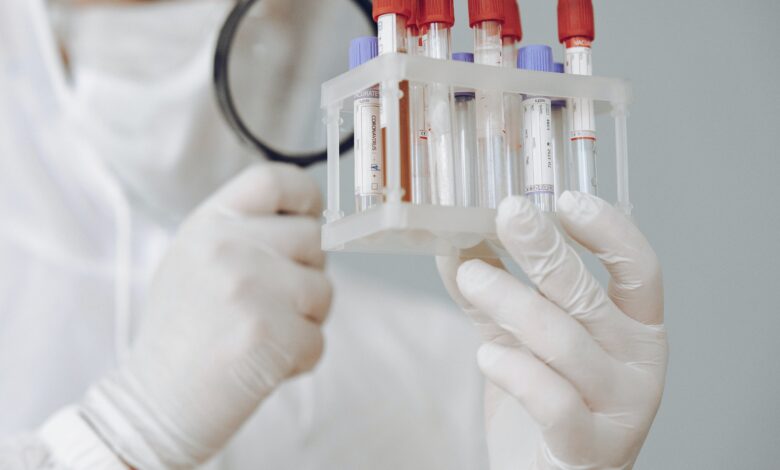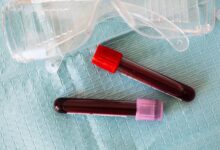Cholesterol analysis

Definition of cholesterol
Cholesterol is a fatty substance essential for the functioning of the body. In particular, it enters into the composition of cell membranes and serves, among other things, as a “raw material” for the synthesis of numerous hormones (steroids).
However, excess cholesterol can be harmful, as it tends to accumulate in blood vessels and form so-called atherosclerotic plaques which can ultimately increase cardiovascular risk.
Cholesterol is not soluble in the blood: it must therefore be transported there by proteins, with which it forms complexes called lipoproteins.
Cholesterol can be associated with several types of “carriers” in the blood:
- LDL (for low -density lipoproteins ): LDL-cholesterol is considered the “bad” cholesterol. The reason ? LDL carries cholesterol from the liver to the rest of the body. If LDL-cholesterol is present in excessive amounts, it is associated with an increased cardiovascular risk.
- HDL (for high -density lipoproteins ): HDL-cholesterol is often referred to as the “good” cholesterol. In fact, HDLs have the function of “pumping up” blood cholesterol and transporting it to the liver, where it is stored. They therefore have the effect of lowering the level of cholesterol in the blood, and a high level of HDL is associated with a lower cardiovascular risk.
- VLDL (for very low-density lipoproteins ): they mainly contribute to transporting another type of fat, triglycerides.
Blood cholesterol comes from food but also from so-called endogenous synthesis in the liver.
Why do a cholesterol test?
The measurement of blood cholesterol ( cholesterolemia ) is done routinely, especially after 40 years (or 35 years in men and 45 years in women), in order to detect hypercholesterolemia and to make a ” lipid balance ” . This assessment must be carried out once every 5 years minimum after this age.
The measurement can also be indicated, among other things:
- before prescribing contraception
- in a person on cholesterol-lowering treatment, to check the effectiveness of the treatment
- in case of symptoms suggesting the presence of a high level of cholesterol (cutaneous nodules called xanthomas).
The cholesterol analysis will take stock of the total cholesterol level, but also of the LDL-cholesterol , the HDL-cholesterol and the total/HDL cholesterol ratio, which makes it possible to assess the cardiovascular risk. A measurement of blood triglycerides is carried out at the same time.
- bridge
- Allergies (overview)
- Achluophobia : all about the fear of the dark
- At what age can you do bodybuilding?
- Fatigue in the morning: causes and remedies
Cholesterol test procedure
Cholesterol is measured by blood test in a medical analysis laboratory.
The doctor will give you instructions on whether you need to fast or not, not to drink alcohol before the test and whether or not to take your medication, if you are on treatment.
What results can be expected from a cholesterol test?
Depending on the result, the doctor may decide whether or not to initiate a so-called “ hypolipidemic ” or “ hypocholesterolemic ” treatment, in order to lower the level of fats in the blood, if it is too high. We distinguish :
- pure hypercholesterolemia: high LDL-cholesterol levels.
- Pure hypertriglyceridemia: high triglyceride level (≥ 5 mmol/l).
- Mixed hyperlipidemia : elevated LDL-cholesterol and triglyceride levels.
The assessment is considered normal if:
- LDL-cholesterol < 1.60 g/l (4.1 mmol/l),
- HDL-cholesterol > 0.40 g/l (1 mmol/l),
- triglycerides < 1.50 g/l (1.7 mmol/l).
However, treatment recommendations depend on the patient’s age and other cardiovascular risk factors. They also vary slightly by country.
In general, treatment (dietary and/or drug management) is initiated when the LDL-cholesterol is greater than 1.6 g/l (4.1 mmol/l) but when the combined cardiovascular risk is very high (hypertension , diabetes, cardiovascular history, etc.), treatment can begin if the LDL-cholesterol level is greater than 1 g/l.










